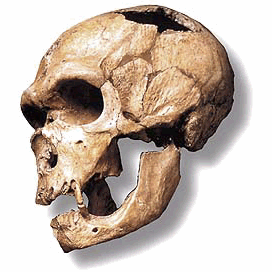Archaeopteryx: The Bird-Like Dino
- Laurie L.

- Dec 8, 2020
- 2 min read
Updated: Jun 24, 2022
Named Archaeopteryx, meaning “ancient wing," the scientific name of this prehistoric bird is Archaeopteryx lithographica. This fossil was the first dinosaurs discovered that had feathers!
Origin of Location
The species lived during the Late Jurassic period about 150 million years ago (For more info. on the Jurassic period click this LINK). The first specimen was discovered in 1861, just 2 years after Charles Darwin published his work on The Origin of Species.
It lived in what is now southern Germany and Portugal during a time where an archipelago of tropical islands existed near the equator.
Bird-Like Features
The largest of the Archaeopteryx would've been the size of a raven or magpie. They had jaws with sharp teeth (unlike birds), 3 fingers with claws, a long bony tail, hyperextensible second toes (killing claw), and feathers (like modern birds)!
The wings of Archaeopteryx were rounded, short, and asymmetrical which means it could fly (flightless birds have symmetrical wings). It was able to fly in cluttered environments including trees and bushes similar to birds such as crows and pheasants.
Ancestry of Modern Birds?
It turns out that Archaeoptryx isn't the ancestor of modern birds as we have them today! As more information and research came out, scientists discovered that birds came from the saurischian dinosaurs which are known as the "lizard-hipped" dinosaurs. The image on the left shows you a picture of what archaeopteryx may have looked like while alive.
The picture on the right is a picture of Archaeornithura meemannae, the earliest bird ancestor that lived during the Hauterivian stage of the Early Cretaceous epoch, about 131 million years ago.
Archaeopteryx is a great example of transitional fossils because prior to finding it, Darwin's work (For more information on him, click this LINK) suggested it would exist and dinosaurs had been depicted as entirely featherless up to that point of discovery. (For more information on the processes of evolution click this LINK).
__________________________________________________________________________________
Sources:
Chiappe, L. M., & Witmer, L. M. (2002). Mesozoic Birds: Above the Heads of Dinosaurs. California: University of California Press.
Chiappe, L. M. (2009, April 16). Downsized Dinosaurs: The Evolutionary Transition to Modern Birds. Evolution: Education and Outreach, 2, 248-256. doi:https://evolution-outreach.biomedcentral.com/articles/10.1007/s12052-009-0133-4
Wellnhofer, P. (2004). "The Plumage of Archaeopteryx". In Currie PJ, Koppelhus EB, Shugar MA, Wright JL (eds.). Feathered Dragons. Indiana University Press. pp. 282–300. ISBN978-0-253-34373-4.
Witmer, LM (2009). "Palaeontology: Feathered dinosaurs in a tangle". Nature. 461 (7264): 601–2. Bibcode:2009Natur.461..601W. doi:10.1038/461601a. PMID19794481. S2CID205049989.
Yalden, D. W. (1984, September). What size was Archaeopteryx? Zoological Journal of the Linnean Society, 82 (1-2), 177-188. doi:https://academic.oup.com/zoolinnean/article-abstract/82/1-2/177/2661683?redirectedFrom=fulltext
Feathered Dinosaurs Feature: Archaeopteryx. (2012, June 21). In Paleontological Studies of South Carolina. Retrieved from https://paleo-studies.tumblr.com/post/25586040319/feathered-dinosaurs-feature-archaeopteryx
Jurassic Europe. (2020). In Q-Files. Retrieved from https://www.q-files.com/prehistoric/age-of-dinosaurs/jurassic-europe
Jurassic Period. (2020). In National Geographic. Retrieved from https://www.nationalgeographic.com/science/prehistoric-world/jurassic/
Marshall, M. (2020). The evolution of Archaeopteryx is stranger than anyone imagined. In New Scientist. Retrieved from https://www.newscientist.com/article/mg24232322-200-the-evolution-of-archaeopteryx-is-stranger-than-anyone-imagined/
News Staff. (2015). Archaeornithura meemannae: Earliest Known Ancestor of Modern Birds Discovered in China. In Sci-News. Retrieved from http://www.sci-news.com/paleontology/science-archaeornithura-meemannae-bird-china-02774.html
Paleontology has helped us understand the unique evolutionary history of birds. In UCMP Berkeley. Retrieved from https://ucmp.berkeley.edu/diapsids/birds/archaeopteryx.html
#evolution #outreach #scienceoutreach #science #scienceducation #sciencecommunication #scicomm #scienceblog #blog #education #missinglink #darwin #macroevolution #microevolution #mutation #transitionalspecies #fish #tetrapod #originofspecies #taxonomy #ancestry #ornithology #birds #dinosaurs #reptiles













Comments